RECARO CEO on the future of Business Class and cabin design
We also ask the question, is it fair to recline your seat in Economy?
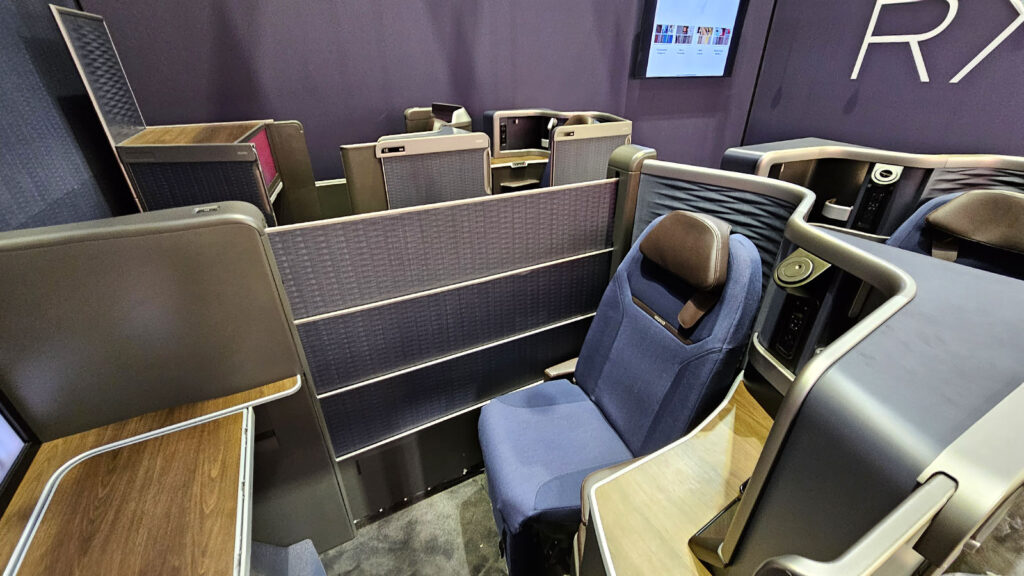
What we'll be covering
In the world of aviation, RECARO Aircraft Seating is a force to be reckoned with. The company manufactures around one in every three Economy Class seats flying in the skies today. But RECARO doesn’t just do ‘more of the same’. For instance, it’s the company that brought flatbeds to Economy, in the form of Air New Zealand’s Skycouch.
Further forward in Business Class, doors are already becoming standard on long-haul flights. But where to next? What can a seat manufacturer do to stand out and innovate, in a world where all of the big airlines are edging ever more premium at the pointy end?
For this and plenty more, I catch up for an exclusive chat with RECARO CEO Mark Hiller. We sit down at the Aircraft Interiors Expo (AIX) in Hamburg, where Hiller also shares his thoughts on that touchy subject, reclining in Economy…

Where does RECARO begin when designing a new seat?
I’m curious: how does a new seat take flight? Does RECARO design basic seats first and then workshop them with airlines? Or does the company wait for an airline to approach and then design something bespoke for each carrier?
‘It’s a combination of both,’ Hiller says as I relax into a new, not-yet-announced RECARO seat, about which I’m still sworn to secrecy. ‘It’s important to find the right balance. If you would just do what the airline would request, then the timeline and also the risk (of not getting timely) certification would be (the) norm.’
‘On the other hand, if you would just sell … standard product, it wouldn’t fit the airline’s needs. So therefore, what we are doing, we are developing product platforms. (We’re) doing the feasibility (study) with input from several leading airlines; we are getting their feedback. Then we bring it to a certain level of maturity.’
Once that’s done, and ‘when we have done the first test, we have discussions with EASA and the FAA (to confirm) that it’s really feasible. We are (then) reaching out to airlines, we are (then) starting to sell the product. Maybe (airlines) also involve their design company, and then we modify more or less some existing concept.’
Hiller quips, ‘I’m sure you see a lot of, I would say, concepts,’ here at AIX. For instance, the new double-decker First Class/Business Class seats. Speaking generally of seating concepts, ‘there’s no feasibility done, which could end up in a complete disaster. Or, you would see other concepts or products which are fully certified, but there will be no change possible or the manufacturer willing to and fast. It’s always to find the right balance.’
The big issue for many: reclining in Economy
For this one, I’ve come to the source. Again, RECARO manufactures just over one in every three Economy Class seats flying worldwide. Whether passengers should or shouldn’t recline, that’s often down to personal or cultural etiquette. But should airlines – and seat manufacturers – allow Economy seats in the first place?
‘I would say, first of all, it’s about the comfort,’ Hiller says tactfully. When it comes to recline, ‘it’s not so much a matter of (whether it’s) needed or not.’ For Hiller, it’s more about having ‘the right angle of the back rest.’
But still, to recline or not to recline? ‘I’m a fan of the hybrid layout,’ Hiller says. That’s ‘where we have several customers who have a fixed backrest (on) seats in the back, with a shorter pitch … and a cheaper ticket. Then, more at the front of the aircraft, (airlines would offer) larger pitch and a recline.’
‘For me, that’s really the best solution from my point of view. (It allows) airlines to offer cheaper tickets on one side, and on the other hand, even more comfort and flexibility in front.’ Perhaps, to say it in other words, reclining seats aren’t a great idea where legroom is tight, but when seats are spaced further apart, there’s less impact on comfort for the traveller behind.
Also, on Economy, Hiller says that most airlines these days are opting for AC power outlets on long-haul aircraft. ‘I would say, on the widebody, it’s maybe 80%’ of airlines that now put AC power in Economy. ‘On the narrowbody, (the more popular choice is) USB-C: but high-power USB-C where you can also charge your laptop.
Westpac Altitude Qantas Black

Following the trends: doors in Business Class
One of the big improvements to long-haul Business Class in recent years has been privacy. Most airlines were already moving in this direction, with direct aisle access expected from every Business Class seat. But with direct aisle access almost universal in long-haul cabins, privacy doors are now in focus.
When airlines order Business Class seats from RECARO, ‘more than 80% have requested the door,’ Hiller says. But there’s a lot to consider both as a manufacturer and for the airline itself, when it comes to this prized perk of the pointy end.
‘A door comes with weight, and also, if it’s not done right, there are lots of maintenance issues.’ For that reason, RECARO has a sharp focus on ‘reliability, and also on (having) a low weight, because it’s important. Putting a door on at 14kg, or whatever, (could be) really damaging the business case.’ Naturally, the heavier a plane is, the more fuel it burns.
‘Our door is much lower weight,’ Hiller says, comparing RECARO to some competitors. But still, ‘it’s weight, it’s cost, and it can be also maintenance on top.’ Offering privacy doors isn’t a decision made lightly, if you’ll pardon the pun.
The next big thing for RECARO at the pointy end
As doors in Business Class become more commonplace, what does the RECARO boss see as the next big thing for passengers flying up front?
‘I think, the next thing to come … the role of Business Class is something like a Business Class Plus with additional features, with different additional space. That’s the next thing to come,’ Hiller reiterates.
To be fair, some airlines are doing this already. China Eastern has something of a premium row at the front of its Airbus A350s, which isn’t usually sold as First Class. It’s also fair to highlight that Malaysia Airlines has both ‘Business Suites’ and ‘Business Class’, although the former is really just a rebranding of the carrier’s previous First Class efforts and seats.
‘Many airlines are talking about it,’ Hiller says of the Business Class Plus concept. ‘Some have already decided to do it, but this will be, from my point of view, the next trend. Especially because First Class is gone. It’s a concept that sees the airlines questioning what more they can offer to either frequent flyers or to passengers who pay extra.’
For instance, RECARO’s new R7 seat – which hasn’t yet been adopted by an airline – offers companion dining capabilities in the first row. When the tray table slides towards the ‘main’ passenger, it opens up the footrest to serve as a chair for a companion.
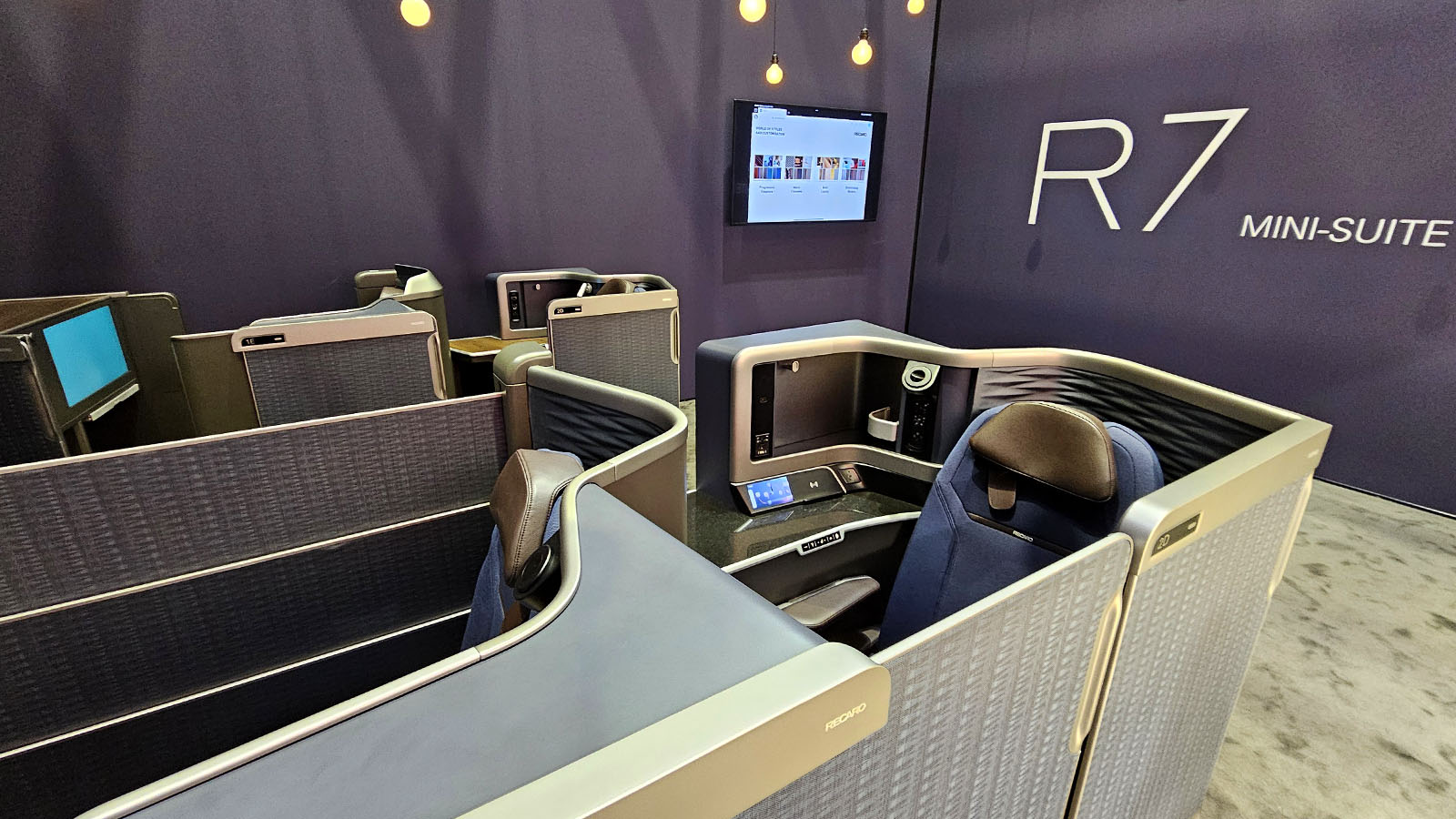
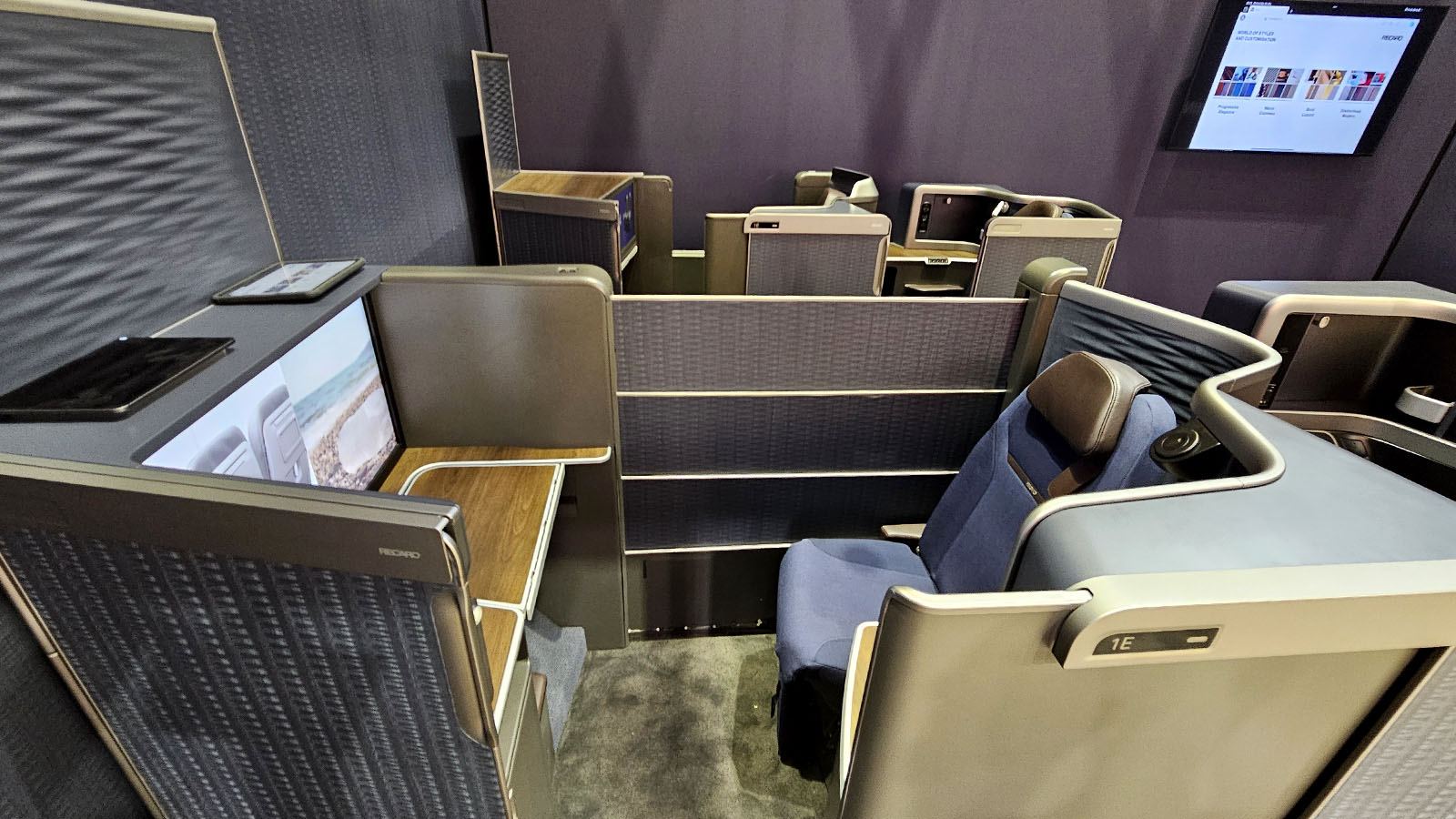
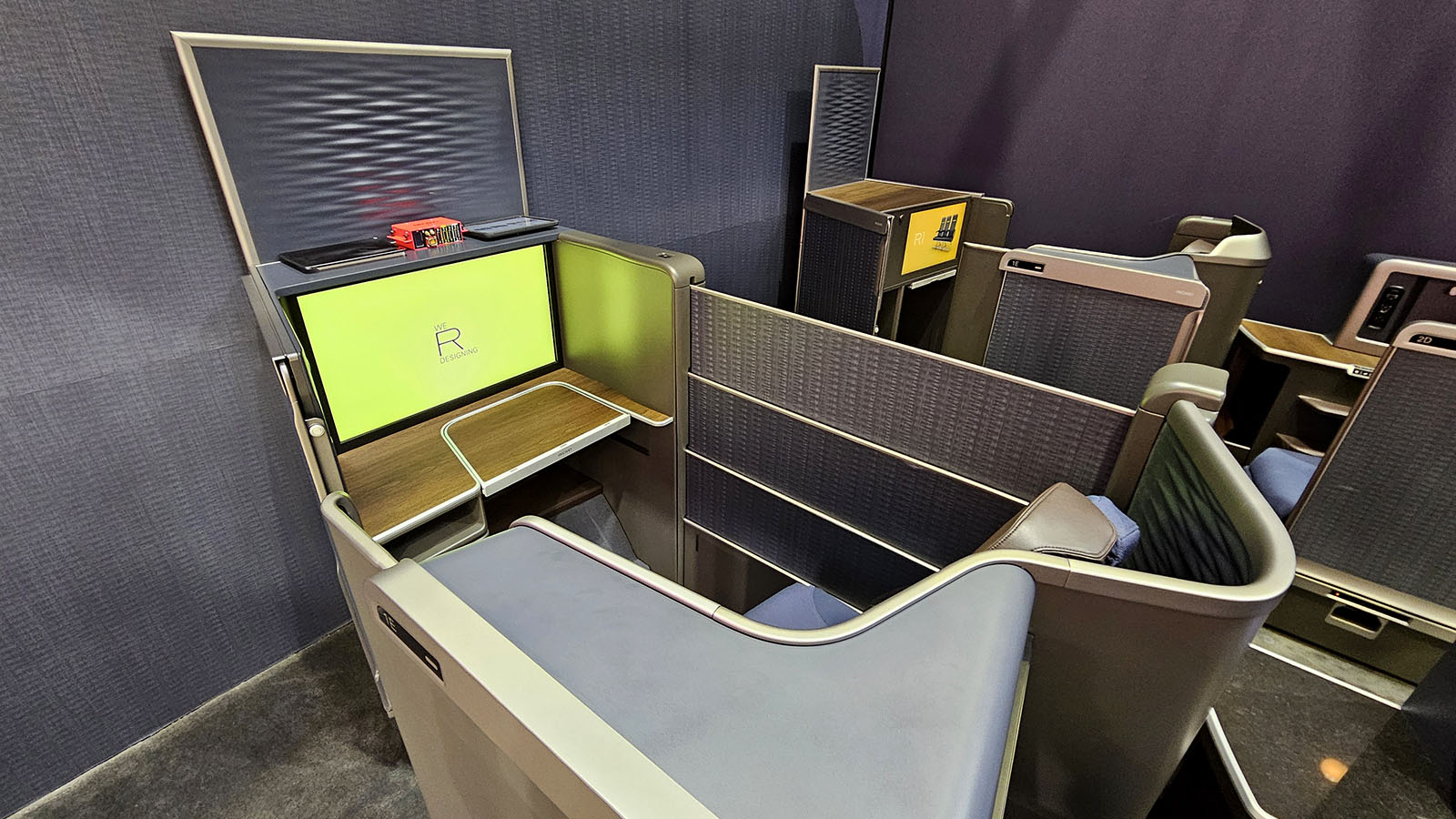
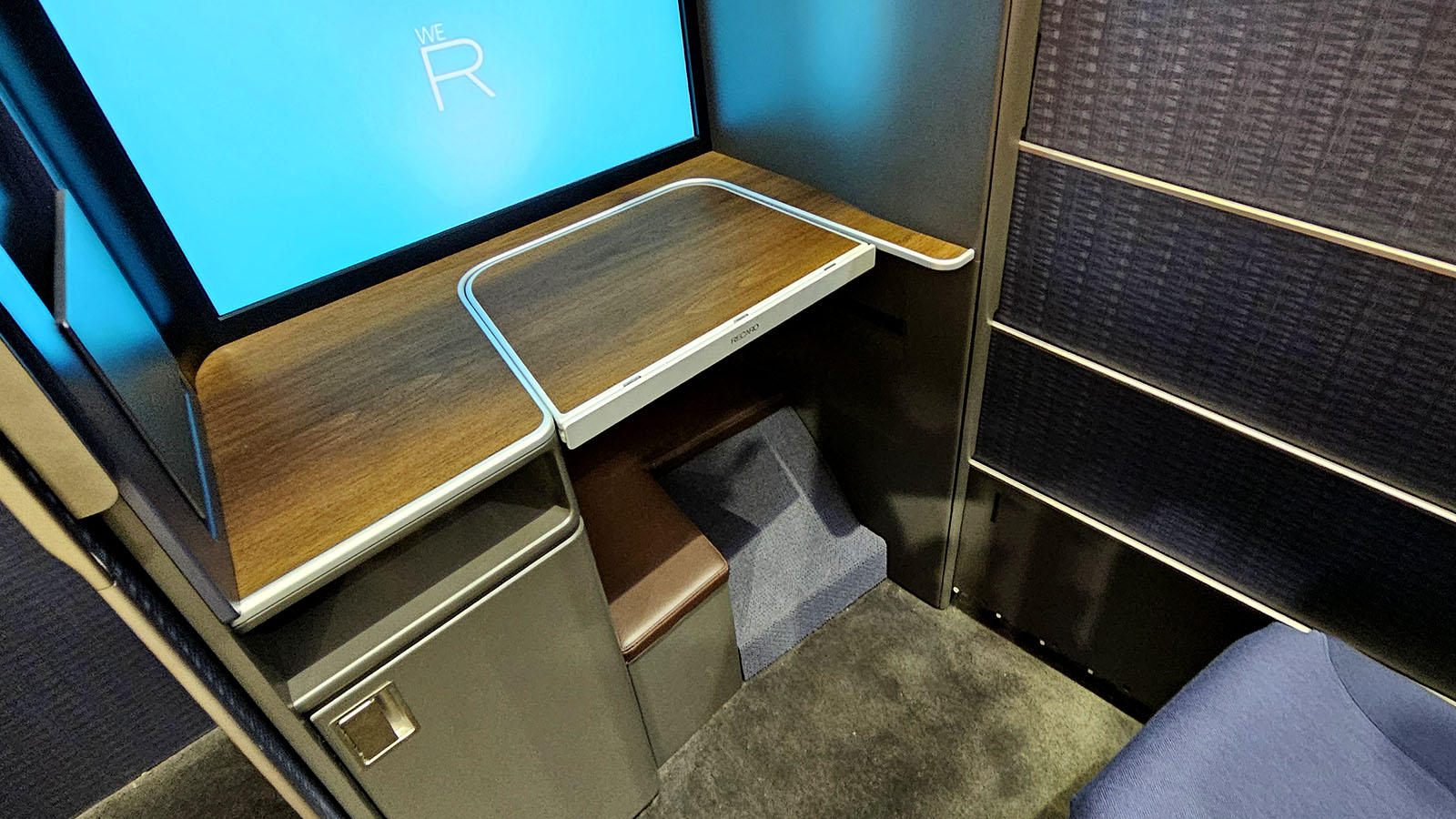

As for First Class, RECARO doesn’t have any suitable suites within its product catalogue. ‘By purpose, we don’t focus on First Class. It’s a very niche market. We think also with the Business Class of today, and also with the features (of) Business Class Plus we just talked about there, we can (already) cover more than 80% of the market.
Will RECARO bring more flatbeds to Economy?
Passengers usually credit Air New Zealand with bringing the Skycouch concept to life. But while it took Air NZ to fly it, Skycouch was built by RECARO. It poses the question – if Business Class is essentially the new First Class, might flatbeds make their way into Economy on more airlines around the world?
Ultimately, ‘it depends on the business model of the airline. It can be difficult to manage and to market. I think there are good examples where it fits really the purpose and the market. Like Air New Zealand … but it’s, I would say, for a very niche market.’
‘Air New Zealand (has) long range, ultra long-haul leisure travel, they fit (it) very well. If you look into other airlines where they’re using maybe the same aircraft for business routes and leisure routes and so on, then it becomes more difficult to manage it.’
‘It’s really specific to the niche. I think … there are 10 airlines … that have (Skycouch) in a sub fleet, or have elements of the Skycouch. From my point of view, the feedback is very positive. But I don’t expect that it’s really a big volume operation going forward.’
Hiller suggests that for extra space on other flights, Economy passengers could ‘buy an extra ticket’. On RECARO’s latest Economy Class seat designs, ‘when you lift up the armrest, the seatback is flush. This means if you buy an extra ticket, you have more or less a wide seat in the end.’
As for Air New Zealand’s new bunk bed concept, would that be different to Skycouch and catch on around the globe? ‘I don’t think so,’ Hiller believes. That’s his prediction for now, but of course, time will tell.
Also read: Comfort test: Qantas’ Project Sunrise Economy seat by RECARO
All photography by Chris Chamberlin.
Stay up to date with the latest news, reviews and guides by subscribing to Point Hacks’ email newsletter.

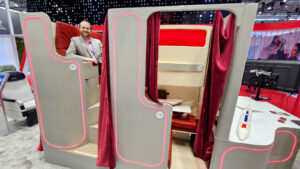
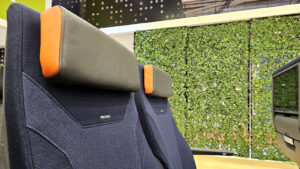


Community